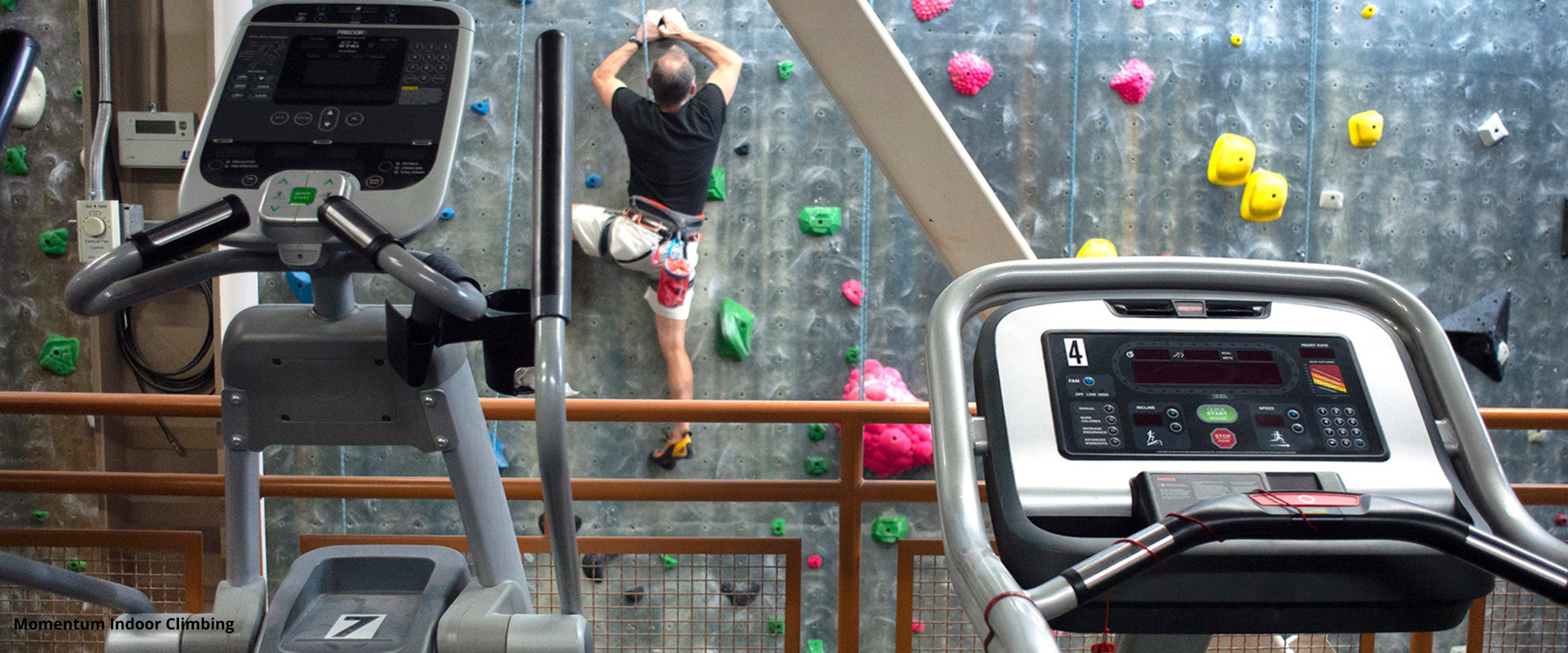Beyond Climbing: What Does Your Indoor Climbing Gym Need?

The beauty of a climbing gym is that it serves so many purposes for its members. The climbing itself is paramount, and the routesetting quality and the walls themselves are integral to keeping climbers coming back.
Beyond climbing, the sky is the limit for what an indoor climbing gym can serve as. Many indoor climbing gyms, whether they’re bouldering-only facilities or full-service rope gyms, have leaned into the amenities that a gym can offer.
This can span a large portion of offerings, though. It can be a yoga studio or a retail location. It can be a weight training facility with professional instruction going well beyond ‘weight training for climbing’. It could even be a restaurant and bar offering trivia nights.
With every add-on, there’s a cost and a benefit, and knowing what will resonate with members and non-members is challenging.
I spoke with Rich Johnston, founder of Vertical World – America’s First Climbing Gym, and Brandon Workman, owner of Riverstone Climbing Gym, both in Washington, to find out how they manage to offer unique opportunities beyond indoor climbing without compromising their primary goals.
Create an Amazing Atmosphere
On the one hand, Rich Johnston sees his gyms as climbing first, where everything else is ancillary.
“You could probably just survive on climbing walls and great routesetting,” Rich said.
He chooses to offer additional services beyond climbing because it helps create a great atmosphere, his most essential ingredient of getting people to come back to the gym over and over.
“You have to be really good at creating a place that people want to be,” Johnston said.
Providing extra incentives such as yoga and fitness classes is a great way to add value and create a lively environment that isn’t simply about climbing. It also limits the reasons that a potential client won’t consider your location.
READ ALSO: How To Manage Rulebreakers in Your Gym
If your indoor climbing gym only offers strictly climbing, then a potential client will have to get a second gym to train or work out for those needs. Yoga and climbing complement each other, adding benefits in both directions for both disciplines. Having it all at one location limits the number of reasons someone can say that your space won’t fit their needs.
Are Add-Ons Worth it?
Brandon Workman has had positive and negative experiences while offering more than just climbing at his gym.
“We have had yoga classes in the past with varying success which seemed to be most dependent on the instructor. We had one instructor that would always have full classes.”
“She was outstanding at self-marketing. Other instructors who relied on us to market their business didn’t do as well. There was really no money made or lost for the gym, but there was a high value for the members who took advantage of free yoga,” Brandon said.
Even in this scenario where the gym didn’t make as much profit off the add-on, they didn’t lose any. But what was gained is the value to the customer, which translates into a better customer experience, and a higher likelihood of retaining said customer.
Climbing retail is another way to make money and gain clientele, though it is somewhat polarizing for gym owners.
Edgeworks Climbing + Fitness in Washington, is working on retail expansion, filling a retail void in the communities they serve.
However, Vertical World doesn’t place a huge emphasis on retail, noting the cost per square foot of gym space is not very profitable.
“I don’t think retail is that important,” Rich said. He believes that if he stocks essential items like belay devices, chalk, and harnesses, the rest may not be worth the space it takes up.
Retail continues to be an ongoing discussion for gym owners across the industry.
Some see it as a waste of space, whereas others can see it add up to a measurable percentage of the gym’s overall profit. With retail, it’s how you use the space, and how much you’re willing to put into it (both time and education, and product).
Interested in Learning More About Retail?
Purchase the Retail Webinar Series from the CWA! In this four-part series, we take you through the steps and nuances of running a retail program and making it successful.
Stick to Your Values
Knowing your values and your core customer is integral in determining what extras are worth investing in.
Is training and hard climbing the most important component? Creating a place where remote workers can hang out and get work done? Attracting a larger audience with competitions, film screenings, and game nights?
I asked Rich and Brandon what additions they would spend their money on if they had unlimited cash.
Rich stuck to his guns, iterating the importance of creating a certain feeling inside his gyms. “I’d spend it on the atmosphere and the climbing. Then you’d have the other things,” Rich said.
Similarly, Brandon’s wish list included finding ways to create a unique place where people want to hang out. He would love to add a brewery and café, making his climbing gym more than just a place to climb.
Knowing your customer base will help you decide whether yoga is needed, or whether the majority of your members are really coming there to project and try hard. Maybe you’re in a community that is new to climbing as a culture and finds it intimidating, so having other ways to spend time at the gym will then maximize their use of your space.
Don’t be stale or singularly focused, know when an idea isn’t working, and make it fun.
About the Author
 David Gladish is a freelance writer, copywriter, and expert storyteller. He helps businesses and brands tell powerful and impactful stories by intimately knowing their products, leveraging marketing messages, and creatively sharing unique content. A former mountain guide and climbing instructor, he’s most at home while climbing pristine Cascade granite.
David Gladish is a freelance writer, copywriter, and expert storyteller. He helps businesses and brands tell powerful and impactful stories by intimately knowing their products, leveraging marketing messages, and creatively sharing unique content. A former mountain guide and climbing instructor, he’s most at home while climbing pristine Cascade granite.
